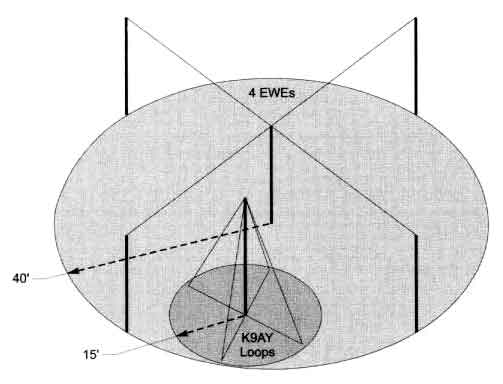This ground isolation contributes to the very low-noise characteristics of the antenna. The coax was buried to within a foot of connection to the transformer. The same relay box as in the K9AY is used to switch the positions of the transformer HI winding and termination resistor, thereby switching the direction from which the antenna receives.
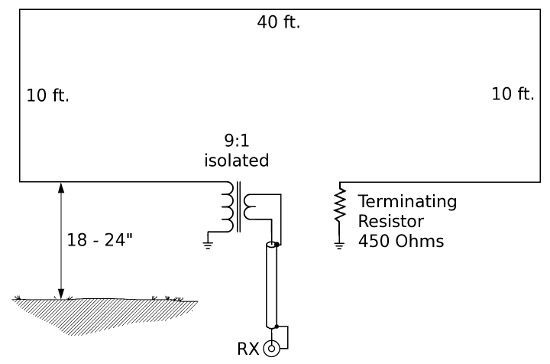
The VE3DO loop
Initial results (VE3CSK) have been very favourable; the comparison antennas at the summer home have been a “boomerang” beverage and a 550 ft standard Beverage. The loop is quieter than either but requires about 20 dB of preamplification to raise the signal level to that of the Beverages. On many mornings when the Beverages are too noisy for comfortable copy the loop is often able to provide fully copyable signals. This is not to say that one should remove the Beverages and receive only with terminated loops, because there is evidence to suggest that the loop responds to signals arriving at a higher angle than do Beverages. This means that the loop will be inferior to a 1 wavelength Beverage at least some of the time, at least equal to the Beverages some of the time, and better than the Beverages some of the time.
- Gain is -26dBi (a 1 wavelength Beverage has a gain of about -8 dBi or less, so a preamp is required for this loop antenna)
- Front-to-back ratio is approximately 20 dB
- Side lobes are down only about 4-5 dB
- Front lobe is approximately 150 degrees between the 3 dB points on 160 meters
- TOA (angle at which the antenna receives optimally) is 33 degrees, somewhat higher than that of a Beverage, nominally 10-20 degrees, but response is good down to about 10 degrees with less gain.
The comparison RX antennas are several 1000 ft Beverages and a standard pennant oriented 320 degrees; the soil is moist to wet clay loam. Results with this loop have been similar; on many days when the Beverages can hear virtually nothing because of high noise the loop often provides a copyable signal.
My analysis confirms the results made by K8GG.
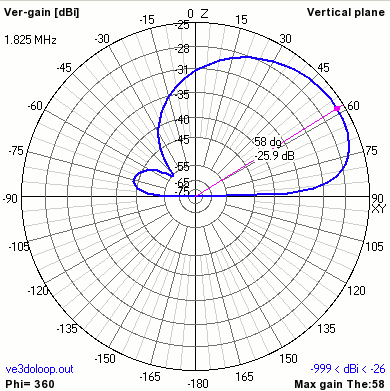
The vertical radiation pattern of the VE3DO loop
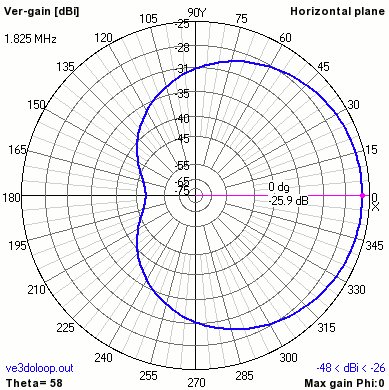
The horizontal radiation pattern of the VE3DO loop
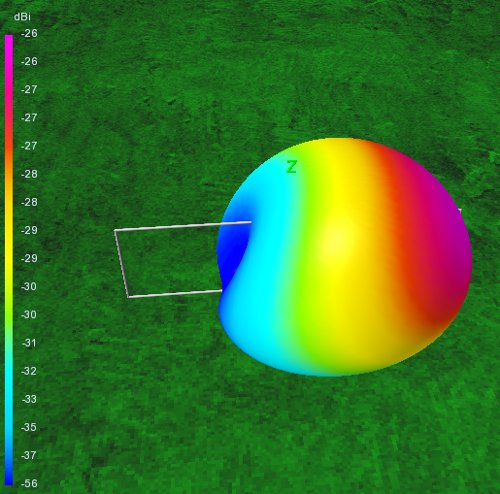
The 3D radiation pattern of the VE3DO loop
First tests confirmed the almost identical properties like K9AY loop, there is no noticeable difference. A preamplifier of 18-20 dB gain with input filtering is a must. I highly recommend an input bandpass filter covering the 1.7 to 4 MHz range, the absolute minimum is an AM MW bandstop rejecting the strongest AM broadcast signal. The optimized terminating resistor was 486 Ohms (for best F/B, average soil). Like K9AY, this antenna is less sensitive to common mode current problems than an usual flag or pennant antenna. Anyway, the main disadvantage is the need of two supports, the VE3DO loop is sensitive to the soil properties and it can’t be rotated. Anyway, there is no magic, and, at least here, the K9AY loop with its single support, seems more practical.
